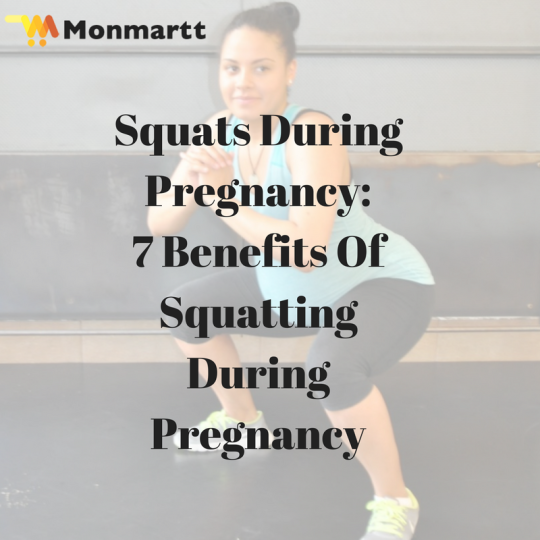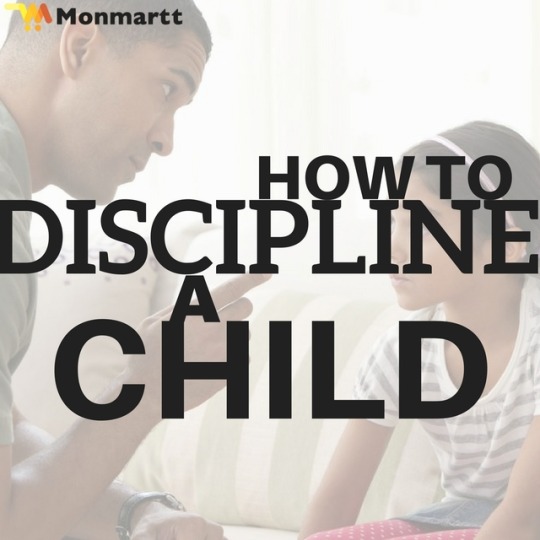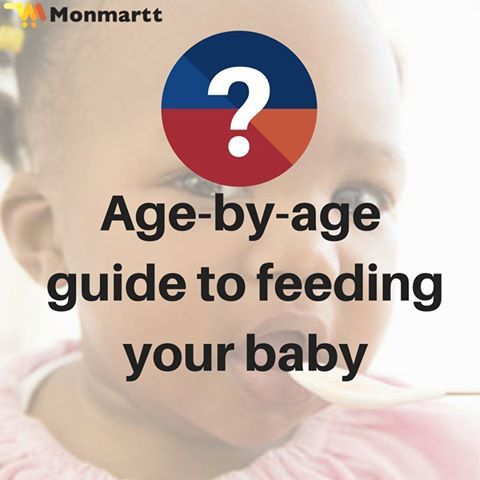Don't wanna be here? Send us removal request.
Photo

According to the American Academy for Pediatrics (AAP), corn can be introduced after six months of age when the baby begins eating solid foods. However, if you are worried about the allergies, wait until the baby turns one year old. Also, corn is difficult to digest, so it is advisable to delay it until their digestive systems improve. Here are various ways you can choose to feed corn for babies:
For infants, feed corn by making a puree of it. You can move on from puree to creamed corn when your child grows into a toddler around 18-24 months. Once your baby is two years or more and learns to use newly grown teeth to chew, you can give kernels to eat but ensure that it is being chewed them.
Benefits Of Corn For Babies:
1. Helps in weight gain: About 100gm corn contains around 350 calories. If your baby is underweight, corn diet could help him gain some.
2. Body growth and development: Corn is rich in B complex. Thiamin supports nerves and brain development; niacin improves metabolism, especially of sugars, proteins, and fatty acids; and folate helps new cell development.
3. Muscle and nerve function: Corn contains phosphorous, potassium, magnesium, and iron which are necessary for muscle and nerve function. Iron improves brain development.
4. Protects blood cells:: The presence of antioxidants (through vitamin E) makes maize good for protecting cells from damage. Antioxidants prevent tissue and DNA damage in the body.
5. Improves digestion: The presence of fiber makes corn a good laxative. If your baby has frequent constipation issues, a few corn products like corn seeds and cornflour could resolve the problem.
6. Good vision and skin: Yellow maize is rich in vitamin A, a source of beta-carotene that gives better eyesight. Beta-carotene, which is not a part of vitamin A, acts as an antioxidant that is good for the baby’s skin.
Via: Mom Junction
0 notes
Photo

Set yourself up on the bed or the floor with a towel and some baby massage oil. 1. The legs: Your baby's legs are a good place to begin the massage, as they are less sensitive than some parts of their body. Using a little oil, wrap your hands around one of the thighs and pull down, one hand after the other, squeezing gently, as if you are "milking" the leg. Switch legs and repeat. 2. The Feet: Take one foot and gently rotate it a few times in each direction, then stroke the top of the foot from the ankle down to the toes. Switch feet and repeat. 3. The Soles: Use your thumbs to trace circles all over the bottom of each foot. 4. The toes: To finish off the feet, take each toe between your thumb and forefinger and gently pull until your fingers slip off the end. Repeat for all ten toes. 5. The arms: Take one of the arms in your hands and repeat the milking motion from the armpit all the way to the wrist. Then, take the hand and gently rotate the wrist a few times in each direction. Switch arms and repeat. 6. The hands: Trace tiny circles over the palm of each of her hands with your thumbs. 7. The fingers: Gently take a finger between your thumb and forefinger and pull, letting your baby's finger slip through your grasp. Repeat for all the fingers and both thumbs. 8. The chest: Place your hands together in prayer position over your baby's heart. Stroke it gently down to her thighs. 9. The back: Roll your baby onto her tummy. Using your fingertips, trace tiny circles on either side of the spine from the neck down to the buttocks. 10. The head: Some babies don't like it If your baby does note that your baby's fontanelle will be soft till around 18 months old. So don't apply any pressure while giving your baby a head massage. Just pat/stroke the oil gently onto all parts of the head and let the oil soak in on its own. 11. Wrap up with a bath or bedtime cuddle or breastfeeding
0 notes
Text
Benefits of Squatting During Pregnancy via Mom Junction

1. Strengthen glute muscles: Squat workouts help strengthen your glute muscles. Moreover, it helps maintain the shape of your bottom. 2. Alleviate lower back ache: Your back pain, which is common during pregnancy, is relieved as squatting exercises help stretch your lower back areas. The pain is caused due to ligament loosening. 3. Prevent constipation: A majority of women experience constipation as they near the end of pregnancy. Squats help in the normal functioning of the digestive system and relieve flatulence. 4. An excellent birth posture: Squatting positions help you cope with contractions during labor. The exercises facilitate the expansion of the birth canal, and thus an easy descent of your baby. Squatting also helps in relaxation of the perineal muscles 5. Strengthen the leg muscles: Squatting during the third trimester help strengthen your leg muscles. Strong legs help in labor and the final push to give birth. 6. Strengthen the pelvic floor muscles: Squatting helps to lower the pressure on pelvic floor muscles, strengthen them and prepare the muscles for birthing 7. Maintain center of gravity of the body: Squatting exercises during pregnancy help in maintaining the center of gravity of your body, which shifts during pregnancy
0 notes
Photo

Lots of newborns find the dressing and undressing experience upsetting. The quicker and calmer you are, the less stress for both you and your baby!
Here are some tips that might help:
1. Make sure the room is warm enough, then place your baby on a soft surface.
2. Put a nappy on your baby to avoid him weeing on you.
3. Stretch the neck of a singlet and, supporting your baby’s head, put the singlet on from the back. Be careful it doesn’t touch your baby’s face as you pull the front over her head – little babies can get very upset by clothes scraping their faces.
4. Do the reverse when undressing, once again trying not to let the clothes touch your baby’s face.
5. Gently place baby’s arms through the arm holes.
6. If you’re dressing your baby in a jumpsuit, unbutton or unzip it and lay him on top. Place his arms and legs into the holes and do up the zip or snap fasteners.
7. Make sure your baby’s legs and arms are clothed if she’s going out in the sun – but it’s better to keep her out from direct sun altogether if you can.
0 notes
Photo

1. Put the small plug in the socket in the side panel of the parent unit and put the adapter in an electrical outlet. The parent unit runs on electrical power. You can also insert batteries to allow mobile use of the parent unit. 2. Insert the non-rechargeable batteries or fully charged rechargeable batteries. Note: Make sure the + and - poles of the batteries point in the right direction. 3. To reattach the battery compartment lid, first insert the lugs into the bottom rim of the battery compartment. Then push the lid home until it locks into place with a click. Please note that the parent unit does not charge the batteries when it is connected to an electrical outlet. Linking parent unit and baby unit: 4. Press and hold the 3 button on the baby unit for 3 seconds until the power-on light lights up. 5. Press and hold the 3 button on the parent unit for 3 seconds until the ‘link’ light starts flashing red. When the parent unit and baby unit are linked, the ‘link’ light turns solid green. 6. What to do if no link is established: If the parent unit is out of range, place it closer to the baby unit. If the baby unit or parent unit is too close to another DECT appliance (e.g. a cordless phone), turn off this appliance or move the unit away from this appliance. If the baby unit is turned off, turn it on 7. To prevent a high-pitched sound from one or both units, make sure the parent unit is at least 1.5 meters/4.9 feet away from the baby unit. If no connection is established, the ‘link’ light continues to flash red and the parent unit beeps. 8. Press the - button to decrease the volume. If you hold down the - button for 2 seconds, you set the volume to mute. Press the + button to increase the volume.
0 notes
Photo

11 surprising toddler facts you need to know
As you watch your little one blow out their first birthday candles, your baby is officially a toddler. 1. It is physically impossible for toddlers to leave the house without trying on at least three pairs of shoes.2. It is also physically impossible for a toddler to sit in a car seat for longer than 15 minutes without falling asleep or asking for food or pooing.And, if you’re lucky, you may get hit with the triple threat.3. Toddlers are incapable of understanding some very simple concepts. Like sharing. And patience. And why we don’t pee all over the carpet or lick the dog.4. Contrary to popular belief, “No” isn’t the phrase you will hear 8 gazillion times a day. You will most likely only hear “No” 7 gazillion times a day. So what trumps “No”?5. Toddlers are mini food critics in disguise. They are put into your kitchen to critique your ability to cut sandwiches correctly or make a decent bowl of Weet-Bix. And they are not afraid to vocalise their opinions on their specific food standards.6. Toddlers don’t feel hot and cold. Or, so it would seem by looking at their choices in attire. In a toddler’s world, a bathing suit is a perfectly acceptable outfit for a cold windy winter day.7. Toddlers don’t really give a fig about whether they sleep in a cot or a big bed. Their preferred place to sleep is on top of your head. Or, as physically close to you as possible.8. Toddlers have an uncanny ability to hide their nappies. One minute you have strapped a fresh nappy to their little butts. The next minute they are doing a nudie run through the house, with no nappy in sight.9. Most toddlers can use both their right and left hands for different activities. A preference for one hand over the other usually doesn’t take shape until around the age of three.10. Your toddler’s step count is literally off the charts. Ten thousand steps a day is the goal for healthy, active adults. But considering the average toddler takes around 176 steps each minute, you can pretty much expect your step count to soar when chasing a toddler around all day.11. Toddler tantrums don’t end in the toddler stage. Oh no. The tantrums can (and probably will) continue for many more years to come. But the good news is that, with time, even the most uncontrollable toddler will soon grow up to learn that lying on the floor in the middle of Coles or banging his head on the cot doesn’t really do much good.
0 notes
Photo

Babies have more bones than adults because as they grow up, some of the bones fuse together to form one bone. This is because babies have more cartilage than bone. New born babies have around 305 bones. A baby's skeleton is mostly made up of cartilage. As a person grows up, most of this cartilage turns into bone in a process called ossification. By adulthood, the skeleton has just 206 bones.
0 notes
Photo

In the Philippines, broken papaya leaves and sugar cane stalks are stroked over the mother’s breasts in a ceremony that is meant to ensure a good milk supply. In some rural towns in Japan, it is common to place figurines and pictures of a breastfeeding woman to help increase a nursing mother’s milk supply. In some developing cultures, colostrum is considered to be a sign of infection or poison and is not given to a newborn baby – mothers will actually express this milk and throw it away! Don’t worry; this isn’t actually true and this liquid gold should never be discarded. Based on the teaching of the Quran, many Muslim women will breastfeed their children for at least two years. In many cultures, foods are classified as “hot” or “cold” foods. This involves more than just their temperatures, but overall “hot” foods are supposed to be easier to digest. Many people from Chinese or Vietnamese backgrounds believe that after childbirth only hot foods may be served to a new mother to help her heal and be able to nurse properly. In many African cultures it is believed that a child should be walking before weaning is even tried.The average age of weaning worldwide ranges from 27 months to 7 years. The weaning age in the United States tends to be much earlier. Wet-nursing (or nursing a baby who you have not given birth to) is considered acceptable in traditional Japanese, Chinese, and Thai cultures, but only if the babies nursed by the one mother are of the same sex. Additionally, in many cultures babies who have been nursed by the same women are considered “milk siblings” and may not marry each other, even if they are unrelated by blood. Some cultures mark introducing solids as a big milestone for a baby to achieve. For example, in some Bangladeshi cultures, weaning is celebrated by giving a baby six rice grains to mark the occasion when he or she turns 6 months old. The celebration of Ramadan, which is a month-long period when Muslims fast from dawn to dusk, exempts breastfeeding women who need those extra calories! Some women will later fast to “pay back” this time, while others will feed poor people to make up for these “extra” meals.
0 notes
Photo

The occasional green stool is not unusual in the breastfed baby. Consistently green stools, however, are not normal for the breastfed baby. Most doctors don’t seem to recognize this as a potential problem because they often define “normal stool” as that of the formula-fed infant. Baby’s stool can be a wide variety of colors and textures , and not all of these are cause for concern. It is helpful to know what is normal for the bf baby as well. Consistently green stools in the breastfed baby can indicate: 1. an imbalance of foremilk/hindmilk, often resulting in frothy green stools.2. a sensitivity to something in the mother’s diet, such as cow’s milk products.3. a sign that baby has an illness. Babies with an intestinal virus or even a simple cold will sometimes have green, mucusy stools. Teething can also bring about green stools due to increased saliva (can also cause tummy upset)4. a lot of green vegetables or something with green food coloring in mom’s diet.5. If baby has started solids, that could also account for the change in color (this is normal with the change in diet).
0 notes
Photo

4 Reasons you should use a breast pump: 1. To stimulate your milk production and increase your milk supply 2. To collect milk to feed a premature baby or one who can't latch on to your breast 3. To relieve the pain and pressure of engorged breasts – though too much pumping when you're engorged can make matters worse 4. To keep your milk supply up if your healthcare provider advises you to stop nursing temporarily because you're taking medication that might be harmful to your baby (this is rarely necessary) or if you're hospitalized for a short time and can't breastfeed throughout the day.
0 notes
Video
youtube
HOW TO PACK A DIAPER BAG WHEN GOING ON A SHORT TRIP
0 notes
Photo

Baby Bedtime tips:
At night, set up a soothing routine. Give your baby a bath, sing lullabies, read a book, or tell a story. These activities can help your baby relax. They also signal that it is time to sleep. Don't get your baby excited with active play right before sleep.
When your baby is getting sleepy, put your baby in his or her crib in a quiet, darkened room. This will help your baby learn to go to sleep in his or her crib.
Don't rock your baby to sleep after about age 4 to 6 months. Rock your baby, but lay the baby down to sleep while he or she is drowsy but still awake.
Don't add cereal to your baby's bottle. Adding cereal to a bottle won't make a baby sleep through the night. Babies don't need solid foods until they are about 6 months old. Some babies may be ready for solid foods at 4 or 5 months. Ask your doctor when you can start feeding your baby solid foods.
Put your baby down for a nap as soon as he or she acts sleepy.
If your baby gets too tired, it may be hard for him or her to get to sleep.
Remember to put your baby down to sleep on his or her back. This helps prevent sudden infant death syndrome (SIDS).
0 notes
Photo

Different Types of strollers and uses:
Standard strollers come in many different styles and designs, but will almost always have a comfortable padded seat that can recline into different positions. Most have sunshades and storage areas below the seat. In some strollers, the baby faces forward, while others position the child looking back at the parents. Many models can shift from one orientation to the other. They can range from simple, inexpensive strollers to high-end strollers loaded up with features.
Car-seat stroller frames are lightweight metal frames designed to carry specific types of infant car seats. You remove the car seat from its base in the car, snap it into the stroller frame, and you’re rolling. (This is especially convenient when you need to take a sleeping baby out of the back seat.) These frames are easy to fold up and throw in the trunk of your car, and don't take up much space. But once your baby outgrows her infant car seat (usually when she hits 35 pounds or so), you won't be able to use one anymore.
Travel systems are standard or jogging strollers that can also carry an infant car seat. Travel systems are larger, heavier, and more expensive than a stroller frame, but you can use them after your baby has outgrown her infant car seat. Travel systems typically include a stroller and matching infant car seat.
Lightweight strollers, sometimes called umbrella strollers, usually weigh 12 pounds or less and fold up compactly. These no-frills strollers may not have much padding and sometimes aren't very adjustable, but they are usually less expensive than models with more features. They’re better for toddlers and older babies (check the manufacturer's age recommendation). Some families use them as backup strollers or for traveling. Most aren't suitable for infants because they don't fully recline or have much head support.
Jogging strollers feature 3 bicycle wheels on a lightweight frame and deliver a smooth ride for both pusher and passenger. They're great for taking your child on long walks, runs, and even hikes through the woods (if the trail is wide enough). Some jogging strollers carry more than one child, either side-by-side or one-behind-the-other.
In urban environments, jogging strollers can scale steep hills and navigate over curbs. But their size makes them hard to maneuver up and down stairs, into elevators, or through stores, and they don't fold up as compactly as other models.
Note: You may need to purchase additional parts to use a jogging stroller safely when your baby is younger than 6 months old. Some fully recline for infants, but if yours doesn't, you'll have to buy an infant-car-seat adapter or a separate bassinet or "carry cot" made for your stroller.
Double and triple strollers let parents push 2 (or more) children at once. In tandem models, one child sits behind the other, an arrangement that can be useful for a baby and an older sibling. Some traditional strollers have the option of adding a platform behind the baby's seat where an older sibling can stand. The other option is a side-by-side model.
Tandem strollers are easier to maneuver through doorways, though the rear seats on some models can lack legroom. Side-by-side strollers can be harder to wheel down a crowded sidewalk, but the seats are equally comfortable for all passengers.
0 notes
Photo

How to care for your baby's gums and emerging teeth: Do I need to clean my baby's gums before his teeth come in? Yes. Even before your baby sports his first tooth, it's a good idea to get into the habit of wiping his gums with gauze or a soft wet washcloth during bath time. You don't need to use any toothpaste yet. Simply wrap the cloth or gauze around your index finger and rub it gently over his gums. Bacteria in the mouth usually can't harm the gums before the teeth emerge, but it can be hard to tell when the teeth are starting to push through, so you'll want to start early. Getting your baby used to having his mouth cleaned as part of his daily routine should make it easier to transition into toothbrushing later on, too. What's the best way to brush my baby's teeth after they start coming in? As your child's teeth start to appear (generally around 6 months), you'll need to start brushing them. (If your child is healthy and still hasn't gotten her first tooth by the end of her first year, don't worry – some children don't start getting teeth until 15 to 18 months.) Brush twice a day. Brush in the morning and right before bedtime. Use a baby toothbrush with a small head and grip suitable for your hand.Use a tiny amount of fluoride toothpaste. To avoid giving your child too much fluoride, use a thin smear of toothpaste or a dot the size of a grain of rice. (It's fine to use any fluoridated toothpaste. Note that many toothpastes marketed for babies don't contain fluoride.)Brush gently on the inside and outside of each of your baby's teeth, as well as her tongue (if she'll let you), to dislodge bacteria that can cause bad breath. Since you're using such a small amount of toothpaste, there's no need to rinse.Replace the toothbrush as soon as the bristles start to look worn or splayed.For now, your baby's teeth are probably far enough apart that you don't have to worry about flossing. In fact, there's no evidence that flossing baby teeth makes a difference. Most dentists recommend starting to floss when tooth surfaces touch and you can't clean them with a toothbrush. How can I tell if my baby is getting the right amount of fluoride? Your baby's developing teeth can benefit from a little fluoride. (The amount recommended for children under 3 is .25 milligrams per day.) This mineral helps prevent tooth decay by strengthening tooth enamel and making it more resistant to acids and harmful bacteria. Your baby can get fluoride from toothpaste, water, supplements (if necessary), and a fluoride varnish that his primary healthcare provider or dentist can apply to his teeth. Note: In general, it's not a good idea to give your baby water until he's about 6 months old. Until then, he'll get all the hydration he needs from breast milk or formula, even in hot weather. Read more about giving water to your baby. If the water you use to make your baby's formula contains fluoride, he'll get fluoride from his bottle feedings. Most municipal water supplies are fortified with adequate fluoride. (Call your local water authority to find out about yours). Read more about what kind of water to use to prepare baby formula. If your municipal water supply isn't fluoridated or you get your water from a well, you might consider buying a test kit from your local health department, a hardware store, or a pharmacy. If the fluoride content is less than .3 parts per million, ask your child's doctor or dentist whether you should give your child a fluoride supplement. The doctor can prescribe fluoride in the form of drops that you can add to your baby's bottle or cereal once a day. Experts don't recommend fluoride supplements for babies under 6 months old. Bottled water and fruit juices may contain fluoride, although the amount isn't always listed on the label. Keep in mind that while a little fluoride is a good thing for your baby's teeth, too much of it can lead to a condition called fluorosis, which causes white spots to show up on your child's adult teeth. This is why it's important to use only the tiniest amount of toothpaste until your child is old enough to rinse and spit it out. When should I start taking my baby to the dentist? The American Academy of Pediatrics and the American Academy of Pediatric Dentistry recommend that you take your child to the dentist within six months after her first tooth erupts, or by her first birthday, whichever comes first. In the meantime, at every well-baby visit, your baby's primary healthcare provider should take a look at your baby's teeth (if she has any) and apply fluoride varnish every three to six months, depending on your baby's risk of cavities. Risk factors include a family history of cavities and poor dental health in the mother during pregnancy. When you do take your child to the dentist, be sure to communicate what fluoride treatments your baby has already received at the doctor's office. If you can't afford dental care for your baby, consider getting in touch with your local health department to ask about resources. Do certain foods cause tooth decay in babies? Certain foods can contribute to cavities. Sweet foods like these are a common culprit: fruitdried fruitjuicepeanut butter and jellyStarches can also contribute to cavities: breadscrackerspastapretzelsServe these foods at mealtime rather than as snacks so they're more likely to get dislodged and won't sit on the teeth too long. Serving them with water is also helpful. Don't put your baby to bed with a bottle of milk, formula, juice, or sweetened liquid. These liquids feed bacteria in the mouth that cause tooth decay.
0 notes
Photo

It’s hard to deny the importance of discipline. "Discipline has to do with civilizing your child so they can live in society," says psychiatrist Michael Brody, MD. Yet kids repeatedly test their parents’ limits. When it comes to disciplining children, there is no quick fix and no magic bullet. If you, like many parents, have tried to discipline kids who don’t want to listen, this article is for you. WebMD asked parenting experts for tips on finding that nice balance between disciplining kids without being a drill sergeant or a pushover. Discipline Tip # 1: Reward Good Behavior When punishment is the centerpiece of discipline, parents tend to overlook their children’s best behaviors. "You’ll get a lot further with positive reinforcement than negative reinforcement," says Mason Turner, MD, chief of psychiatry at Kaiser Permanente San Francisco Medical Center. Rewarding good deeds targets behaviors you want to develop in your child, not things he shouldn’t be doing. This doesn’t mean you should give your child a pound of chocolate every time he picks up a paperclip. "There are grades of positive reinforcement," says Turner. "There’s saying ‘good job. I’m really glad you did that,’ when your child cleans his room." And there are times when your child does something extraordinary that may warrant a larger reward. Discipline Tip # 2: Be Clear About Rules If your rules are vague, or discussed only when one has been broken, your child will have a hard time following them. "It’s up to the parent to make clear what’s expected of the child and what isn’t," says Brody, who chairs the Media Committee of the American Academy of Child and Adolescent Psychiatry. Be sure to explain the rules of the house when you can speak clearly and your child is not too upset to listen. James Sears, MD, a pediatrician in Southern California, suggests practicing discipline when it works for you. For instance, when you have 30 minutes to spare, interrupt your child’s game and tell her you need help with something. If she helps, great, do a quick and easy chore together and let her go back to her game. If she throws a tantrum, you have time to deal with it. "If you do that every once in a while, your child will understand that when Mommy says I need to put my toys away, I need to do it," says Sears. Discipline Tip # 3: Neutralize Arguments How do you deal with a child who wants to argue into submission? Steer clear of no-win arguments. Instead, "go brain dead," advises Jim Fay, co-author of Parenting with Love and Logic. For instance, if your child says, "This isn’t fair," say, "I know." If your child says, "All of my friends get to have this," say, "I know." Or you can use the phrase, "And what did I say?" to enforce rules you have already discussed with your child. Sometimes the less you say, the more clear your point becomes. Discipline Tip # 4: Buy Yourself Time You may have read that children need to experience the consequences of their actions as soon as possible. And maybe you’ve heard that parents should be calm as they discipline children. In reality, you may not be able keep your cool and react right away. "Buy yourself time to calm down before you deal with the situation," suggests Fay. You can tell your child, "Wow, bad decision. I need some time to figure out what I’m going to do about that." When your emotions are in check, express empathy for your child first, then deliver the consequences. Empathy gives your child room to connect his behavior to the outcome. "You don’t have to get angry at kids, you don’t have to yell. Just allow it to become their problem," says Fay. Discipline Tip # 5: Be Consistent About Rules Sometimes sticking to the rules is as challenging for parents as it is for kids. Sears sees too many parents turn the other cheek when their kids talk back or otherwise act out. "Parents just are not consistent in enforcing rules," he tells WebMD. Not enforcing your own rules puts everything you say into question. "If kids don’t know what to expect from their parents, they never really know what the rules are." You may want to back down for fear of ruining your child’s fun. Keep in mind that kids benefit from limits. Rules and structure give children the security of knowing their parents are watching out for them. As kids get older, you can take a more flexible approach. Around the ages of 9 and 12, kids should get "a little leeway to test out the rules," says Brody. "But always be very careful about safety." Discipline Tip # 6: Model Good Behavior Like it or not, your children are watching you. You can dole out as much advice as you want, but your personal conduct makes a more lasting impression than your words. "The number one way human beings learn is through imitation and copy," says Fay. If you want your child to be honest, make sure you practice honesty. If you want your child to be polite, let her see your best manners, at home and in public. The fact is, raising disciplined children is not easy. Despite your best efforts, there will always be good days and bad days. For evidence, look to the experts we interviewed for this article. Even after years of working with families, all four shared stories of their own children’s meltdowns or misbehavior. "As a parent, you’re constantly pushing your own limits. It’s the toughest but the greatest job I’ve ever had," says Turner.
0 notes
Photo

Age-to-age guide to feeding your baby: Age: Birth to 4 months Feeding behavior Rooting reflex helps your baby turn toward a nipple to find nourishment. What to feed Breast milk or formula ONLY How much per day How to tell if your baby's getting enough breast milk How to tell how much formula your baby needs Feeding tip Your baby's digestive tract is still developing, so solid food is off-limits for now. Age: 4 to 6 months Signs of readiness for solid food The following are some guidelines from the American Academy of Pediatrics. Your child is likely ready to try solids when he: Can hold head up and sit upright in highchair Shows significant weight gain (doubled birth weight) and weighs at least 13 pounds Can close mouth around a spoon Can move food from front to back of mouth 7 signs your baby is ready for solid foods Play Video Wondering when to start your little one on solids? Watch for these signs that usually indicate when babies are ready to try their first food. See all videos What to feed Breast milk or formula, PLUS Pureed vegetables (sweet potatoes, squash) Pureed fruit (apples, bananas, peaches) Pureed meat (chicken, pork, beef) Semi-liquid, iron-fortified cereal Small amounts of unsweetened yogurt (no cow's milk until age 1) How much per day Begin with about 1 teaspoon pureed food or cereal. Mix cereal with 4 to 5 teaspoons breast milk or formula. (It will be very runny.) Increase to 1 tablespoon of pureed food, or 1 tablespoon of cereal mixed with breast milk or formula, twice a day. If you're giving cereal, gradually thicken the consistency by using less liquid. How to introduce new foods to your baby Play Video Find tips on how to introduce solids safely and effectively, from recommended first foods to sticking to a schedule. See all videos Feeding tips If your baby won't eat what you offer the first time, try again in a few days. Introduce new foods one at a time. Wait two or three days, if possible, before offering another new food. (Wait three days if your baby or family has a history of allergies.) It's also a good idea to write down the foods your baby samples. If he has an adverse reaction, a food log will make it easier to pinpoint the cause. The order in which you introduce new foods doesn't usually matter. Your child's doctor can advise you. Get more detailed tips on how to introduce solids. Print our step-by-step guide to feeding your baby. Age: 6 to 8 months Signs of readiness for solid food Same as 4 to 6 months What to feed Breast milk or formula, PLUS Pureed or strained fruits (banana, pears, applesauce, peaches, avocado) Pureed or strained vegetables (well-cooked carrots, squash, sweet potato) Pureed meat (chicken, pork, beef) Pureed tofu Small amounts of unsweetened yogurt (no cow's milk until age 1) Pureed legumes (black beans, chickpeas, edamame, fava beans, black-eyed peas, lentils, kidney beans) Iron-fortified cereal (oats, barley) How much per day 1 teaspoon fruit, gradually increased to 2 or 3 tablespoons in four feedings 1 teaspoon vegetables, gradually increased to 2 or 3 tablespoons in four feedings 3 to 9 tablespoons cereal in 2 or 3 feedings Feeding tips Introduce new foods one at a time. Wait two or three days, if possible, before offering another new food. (Wait three days if your baby or family has a history of allergies.) It's also a good idea to write down the foods your baby samples. If she has an adverse reaction, a food log will make it easier to pinpoint the cause. The order in which you introduce new foods doesn't usually matter. Your child's doctor can advise you. Get more detailed tips on how to introduce solids. Age: 8 to 10 months Signs of readiness for solid and finger foods Same as 6 to 8 months, PLUS Picks up objects with thumb and forefinger (pincer grasp) Can transfer items from one hand to the other Puts everything in his mouth Moves jaw in a chewing motion What to feed Breast milk or formula, PLUS Small amounts of soft pasteurized cheese, cottage cheese, and unsweetened yogurt Mashed vegetables (cooked carrots, squash, potatoes, sweet potatoes) Mashed fruits (bananas, peaches, pears, avocados) Finger foods (O-shaped cereal, small bits of scrambled eggs, well-cooked pieces of potato, well-cooked spiral pasta, teething crackers, small pieces of bagel) Protein (small bits of meat, poultry, boneless fish, tofu, and well-cooked beans, like lentils, split peas, pintos, or black beans) Iron-fortified cereal (barley, wheat, oats, mixed cereals) How much per day 1/4 to 1/3 cup dairy (or 1/2 ounce cheese) 1/4 to 1/2 cup iron-fortified cereal 3/4 to 1 cup fruit 3/4 to 1 cup vegetables 3 to 4 tablespoons protein-rich food Feeding tip Introduce new foods one at a time. Wait two or three days, if possible, before offering another new food. (Wait three days if your baby or family has a history of allergies.) It's also a good idea to write down the foods your baby samples. If he has an adverse reaction, a food log will make it easier to pinpoint the cause. Age: 10 to 12 months Signs of readiness for other solid foods Same as 8 to 10 months, PLUS Swallows food more easily Has more teeth No longer pushes food out of mouth with tongue Tries to use a spoon What to feed Breast milk or formula PLUS Soft pasteurized cheese, yogurt, cottage cheese (no cow's milk until age 1) Fruit mashed or cut into cubes or strips Bite-size, soft-cooked vegetables (peas, carrots) Combo foods (macaroni and cheese, casseroles) Protein (small bits of meat, poultry, boneless fish, tofu, and well-cooked beans) Finger foods (O-shaped cereal, small bits of scrambled eggs, well-cooked pieces of potato, well-cooked spiral pasta, teething crackers, small pieces of bagel) Iron-fortified cereals (barley, wheat, oats, mixed cereals) How much per day 1/3 cup dairy (or 1/2 ounce cheese) 1/4 to 1/2 cup iron-fortified cereal 3/4 to 1 cup fruit 3/4 to 1 cup vegetables 1/8 to 1/4 cup combo foods 3 to 4 tablespoons protein-rich food Feeding tip Introduce new foods one at a time. Wait two or three days, if possible, before offering another new food. (Wait three days if your baby or family has a history of allergies.) It's also a good idea to write down the foods your baby samples. If she has an adverse reaction, a food log will make it easier to pinpoint the cause.
0 notes